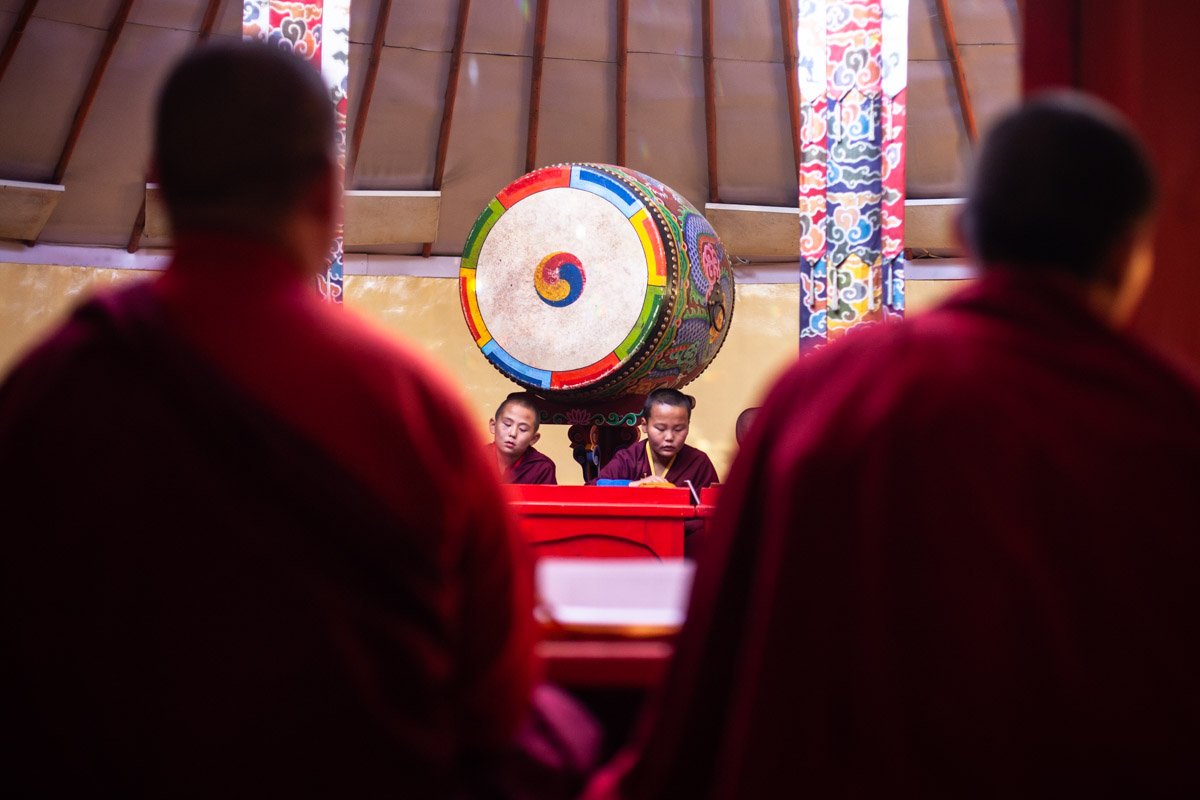We are done with the reindeer and the magical Khovsgol lake but we decided to make a last stop on the way back to Ulan Bator.
We spend the night in Ulzi’s family, meeting her mother and brother before heading to the coloured city of Erdenet, the second biggest city of Mongolia.
Located near the city of Erdenet about 400 km northwest of the capital, Amarbayasgalant Khiid is a Buddhist monastery of the Gelugpa School of Tibetan Buddhism in Mongolia. Built near the Selenge River, at the foot of Mount Büren-Khaan, it has a Chinese architectural style, with Mongolian and Tibetan influences. It was laid out in a symmetrical pattern along a North-South axis. In addition to an important religious center, the temple was also an important place for Buddhist teaching in Mongolia.
“Tranquil Felicity”
Also known as the “monastery of tranquil Felicity”, this monastery is considered one of the three largest and most important Buddhist centers in the country. It was built in the first half of the 18th century (between 1727 and 1736) and partly escaped the wave of destruction of temples and the assassination of monks operated in 1937 by Horloogiyn Choybalsan on Stalin’s orders.
The main buildings still remain, but after nearly 50 years of abandon during the communist time and despite of a renovation that started in the late 80s, the conservation state of the monastery is pretty bad. However, you can feel a very peaceful vibe once you are there. It is still active and you can attend Buddhist celebrations throughout the year (usually around 9am) and listen for a moment the hypnotic mantras recited by the monks.
A young monk quickly guided us in the main building before returning with his peers for a good snowballs battle (the monks also know how to have fun). We spent the rest of the afternoon exploring the monastery, totally alone, in a special atmosphere… something between past greatness and almost abandonment that gives the site something singular.
Last night in the north
We spent our last night at a cozy ger managed by a very friendly old woman who has lived in the village for 25 years. We had a small farewell celebration with Ulzi and Byamba who have become our little family over our days in North Mongolia … sure, we’ll miss them!
Next morning, we explore the surrounding hills to reach the the huge stupa and the large Buddha statues.
We finally left the place and started a very long and boring drive back to UB going through asphalted road and a little sad because we knew that our Mongol experience will end soon.
Finally, we arrived to civilization at the end of the day. It is time to say goodbye to Ulzi and Byamba. We are very thankful to them because they made everything to have a memorable time at the north of Mongolia.
In conclusion
We liked:
- The peaceful and mystical atmosphere of the place
- The winter tranquility
- The beauty of the surrounding landscapes
- The kindness of the X, the old lady who manages the accommodation.
We did not really like:
- The freezing cold of this early winter (especially Fiorella)
Useful information:
How to get there:
- To get to Amarbayasgalant Khiid, take a bus from UB to Erdenet. From there, you will need to find a local taxi to get to the monastery (it takes about two hours depending on the conditions)
- You can take an agency directly from UB and drive you to the monastery. We will of course advise you the agency of Soko, Mongol Nomads.
Once there:
- Take half a day to visit the site and another to go to the stupa and statues on the surrounding hills.
- For the rest, there is absolutely nothing else to do as the place is isolated from everything.
What to bring:
- The comfort on the spot is rather good and that it is in ger or in the few houses of the village, you will be well warm. It can still be cold, see very cold at the end of the day so plan anyway warm clothes.





































